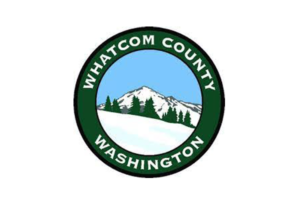One thing I love about working in local food, and with food hubs in particular, is how the space is ever evolving.
Planning organizations and current or aspiring food hub operators are constantly evaluating the business model – identifying opportunities to better serve their growers, improve access to local food in their community, and increase their financial viability.
An emerging, innovative idea that New Venture Advisors has had the opportunity to help support is the concept of a food hub network – a model through which food hubs across a state or region collaborate formally or informally, to share best practices, business services and (perhaps most importantly) buy, sell and distribute to and from each other.
A few projects we’ve heard about or are involved in include:
- Michigan Food Hub Network: Trailblazers in so many ways, this network has formalized best practice sharing among food hubs in Michigan. We’ve had the chance to work with them recently on an exploration into technology solutions that might help support their efforts to buy and sell from each other. The public report can be found here and a webinar titled “Creating a Statewide Information Technology Platform for Food Hubs: Lessons from Michigan” will be held on January 8, 2016.
- Wyoming Statewide Food Hub Network: Working with Jesse Miller of Bould Development, NVA conducted a market assessment to evaluate the potential for a food hub in Casper, WY. The main opportunity identified through this assessment was the need for a statewide network of food hubs across Wyoming. Wyoming’s unique landscape – with its massive geographic footprint, a very small set of moderately sized “population centers” dispersed from each other, and its agriculture concentrated in specific regions – showed us the importance of small food hubs emerging in each geographic cluster that would strategically buy and sell from each other, so they each have adequate access to both supply and demand. In the current phase of exploration we are working with the Rocky Mountain Farmer’s Union, and can imagine how the broader region may be integrated to strengthen food hubs across Wyoming, Colorado and New Mexico.
- Local Iowa Food Enterprise: In 2013, a banker serving farmers and rural communities wrote a white paper posing this question: Can Iowa establish a for-profit food hub and aggregation center or centers that are economically sustainable and provide economic benefits to rural areas of the state? A food hub working group came together around that question, and the concept of an integrated network of hubs, potentially working together as one enterprise, has emerged. This is in the very early stages of exploration, guided by a hypothesis that a single operating entity may improve each hub’s economic stability and sustainability, and in so doing create jobs and increase farm incomes in rural communities.
- Other projects: We have learned about other explorations such as in South Carolina, a trade-driven concept similar to the Wyoming model that links protein production in the north with produce production in the south through a network of “nodes”, and food safety-focused efforts across Ohio and West Virginia and in Indiana to make GAP certification more available to groups of regional farms and food hubs.
Here are seven reasons we are excited about the trend and are watching its development closely….
- Grower expansion: Food hubs with a fairly small radius are inherently limited in their market potential (unless their radius includes massive metro areas). When food hubs buy and sell from each other, they can significantly expand the trading radius that growers have access to, thereby allowing growers to invest in increased production.
- Smoothing out gluts: Gluts are a huge challenge for independent producers. Whether they are selling at farmers markets, through CSAs or to institutional buyers – they struggle when everyone around them has eggplant or tomatoes or potatoes at the same time they do. In larger states, different regions may have specific crops that are the specialty of the area. When hubs buy from and sell to each other, they can help bring product that is a “glut” in one region to a nearby region where this local product is still in high demand and securing a reasonable price.
- Bringing advantages of “big food” to the local food movement: Food hubs struggle with a few common challenges, particularly when they are focused on serving wholesale buyers like grocery stores, institutions and restaurants. Meeting volume requirements and having consistent product availability for as long as possible are two of the biggest. Networks of food hubs can bring each food hub some of the product volume and diversity advantages of the big food players, while still keeping true to their core mission of serving small to mid-sized, independent growers and getting more local food to consumers. This recognizes the evolving definition of local that Saloni discussed in a recent post, 9 Trends in Food Hub Planning.
- Improving financial viability of rural food hubs: Rural food hubs are inherently limited by their small demand landscape. If these hubs have access to hubs serving larger markets, they may be able to move more product – improving their financial success and allowing them to better serve their growers.
- Encouraging “coopetition”: This is the idea that you gain more by cooperating with potential competitors than by carving out rigid market distinctions, never doing business with them. Even large regional distributors will buy and sell from one another to keep items in stock and perishable products moving fast. Food hubs with a closely-drawn trading radius or operating entirely independently can miss out on these opportunities. A network model institutionalizes the behavior of coopetition, and that strengthens the food hub’s business and ultimately that of their growers as well.
- Encouraging technology advancement: Across all discussions regarding food hub networks we’ve been part of, the role of technology has been an important component. A technology system can be used to allow food hubs (and their growers) to share product availability and pricing at any given time, to facilitate transactions, and to plan and manage logistics of moving product between food hubs and their growers/buyers. A technology system is often considered fundamental for tracking and reporting, and maintaining traceability across the food supply chain. The emergence of statewide food hub networks is likely to catalyze new innovations by software providers in the local food space.
- Promoting food safety: Between the Food Safety Modernization Act and recent headlines about foodborne illnesses focusing attention on locally-sourced produce, it will be increasingly important for food hubs and their growers to get and maintain GAP (good agricultural practices) certification. There are many barriers that make it difficult for farms and food hubs to comply, and two of the most challenging are the cost and availability of auditors. Networks make it easier to collaborate in the auditing process, reducing the cost as a group of hubs and growers take responsibility for developing a food safety plan, performing risk assessments, training employees and paying for the audit.
With that said, we know this concept is not without its potential challenges and concerns.
Four challenges in particular that have surfaced for us include:
- Maintaining a focus on “as local as possible”: Food hubs emerged to serve the local food movement. While the definition is flexible, there tends to be a shared focus on keeping food “as local as possible” to maximize freshness, sustainability, local economic development and connection between consumers and their farmers. (A recent survey by AT Kearney found 96% of consumer respondents use a 100-mile definition for local, up from 58% in 2014.) While a network of food hub offers great benefits of expanding the trading radius of both hubs and their farmers – bringing tremendous advantages to the local food movement – it is important that the concepts are executed in a way that encourage transactions to take place as locally as possible, at any given time.
- Adding middlemen and sharing margin: Food hubs are already adding a “middleman” to local food transactions that does not exist when farmers are selling directly to their customers. This middleman role can be hugely beneficial to growers – reducing time spent on sales and distribution, minimizing waste, smoothing out sales and cash flow, etc. When food hubs buy and sell from each other, they add more steps between the grower and buyer, which may result in decreased price to growers (and/or increased price to buyers). It is important that these networks establish strategic agreements with respect to pricing and margin sharing that compensate them for the value they bring to the transaction while still ensuring the right pricing for both growers and buyers.
- Logistics and distribution: Buying and selling is just the start. We know that the hardest part of these transactions is often actually moving the food! Coordinating logistics in a small trading area can be hard enough. New distribution solutions may need to be pursued in order to facilitate efficient, cost effective delivery from one hub to another (or from one hub’s producers to another hub’s buyers).
- Recognizing the unique nature of each food hub: The term “food hub” encompasses so many different business models! Distribution and warehousing companies, online marketplaces, CSA aggregators – all of these are part of the food hub umbrella. If statewide networks of food hubs emerge, we hope they are developed in a way that respects and maintains the identities and values of these distinct and unique businesses. Efficiency is critical in this low margin business, and efficiency craves standardization. Yet there is a danger in overdoing it in this vibrant space in which story and the romance of place play so importantly in driving value.
We would love to know about other network efforts that are underway or in discussion today. Please reach out!


